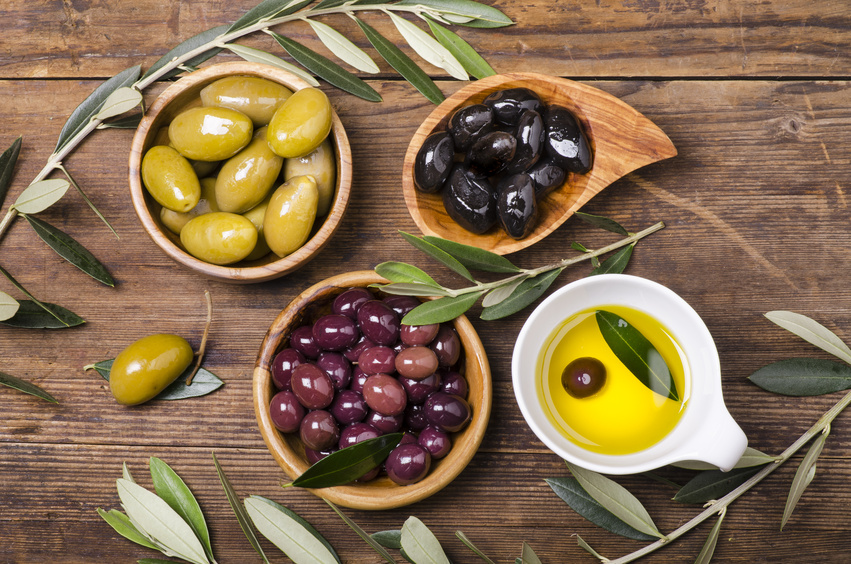When buying, we might be in the habit of checking whether it is extra-virgin olive oil or not… But we should also take note of which kind of olive it is made from, because this is what gives the oil its flavour. There is a world of difference between the mild, subtle oil made from Arbequina olives and the stronger-flavoured Picual variety.
It is worth finding out a bit more about the main varieties of olives to make the most of their culinary potential. What follows is just a flavour of the more than 250 kinds of olive trees grown in Spain alone: if we covered them all, this blog would become an encyclopaedia!
Arbequina
A small olive—native to Catalonia (specifically the town of Arbeca in the province of Lleida) and Aragon—which produces a green oil with yellowish hues and a fruity flavour (hints of green apple and almond). Mild and delicate, it works wonders with salads (including fruit salads), vegetables, white fish and seafood, either steamed or fried. And with desserts. Try it and see…
Cornicabra
Also known as Cornezuelo ‘little horn’, because of its shape. Toledo and Ciudad Real are home to this variety, which yields greenish-yellow oils with aromas of fresh herbs, ripe fruit and almonds and a slightly bitter, tart taste well balanced by a hint of sweetness. They go well with roasts.
Empeltre
If you find a yellowish oil (somewhere between straw and old gold), you’re probably looking at oil made from Empeltre olives, typical of the Lower Aragon region, with an aroma of apples and a mild, sweet taste.
Hojiblanca
This variety is grown in Seville, Córdoba and Málaga and yields oil with hints of fresh grass. It is fruity, sweet and slightly tart, but has a smooth, lingering taste on the palate and an almondy finish. Packed with antioxidants, it is ideal for combating the effects of ageing. It is also the olive oil most easily absorbed by the intestine. It adds a touch of class to any salad, pickle, fish, meat carpaccio or gazpacho and brings out the flavour in blue fish such as salmon and tuna. It should be kept in a dry place.
Kalamata
This Greek olive gives a mild, sweet, fruity oil with low acidity. Dark green in colour, it is great for salads (ideal with feta cheese) and pasta dishes.
Lechín
Whereas Empeltre olives yield yellowish oil, the oil from Lechín olives is whitish, like the flesh of this olive from Seville, Córdoba, Cádiz, Málaga and Huelva. It has a slightly bitter edge and a taste of green almonds.
Manzanilla or Cacereña
This is the most widespread variety in the world and gives full-bodied oil, with aromas of herbs and ripe fruit. It has a strong flavour, with bitter, tart notes, and works well with strong flavours such as meat.
Picual
The queen of olive oils in Spain and globally—half the world’s olive oil is made from this variety. Jaén, Córdoba, Granada, Málaga, Ciudad Real and Badajoz are its main places of origin. Its oil has the taste and aroma of olives and grass. As its name suggests, this full-bodied oil has a bit of a bite, slightly bitter with even hints of wood. Very intense, especially when made from trees grown on the plain, since those grown on the mountain yield fresher, lighter oils. It is also rich in oleic acid, which helps reduce the risk of cardiovascular disease. Its intensity makes it a good match for cold cuts and cheeses, although it can also make salads go with a bang.
Picudo
Emblematic of the olive groves in Córdoba, its name echoes the fact that birds come and peck at the ripe olives. It gives a sweet oil, with hints of exotic fruit, apple and nuts. It is slightly tart. It brings out new sides to salads.
Verdial
This olive yields sweet oils with no bitter or tart edge at all. It is harvested in Badajoz and Málaga. It should be kept in a cool, dry, dark place.


